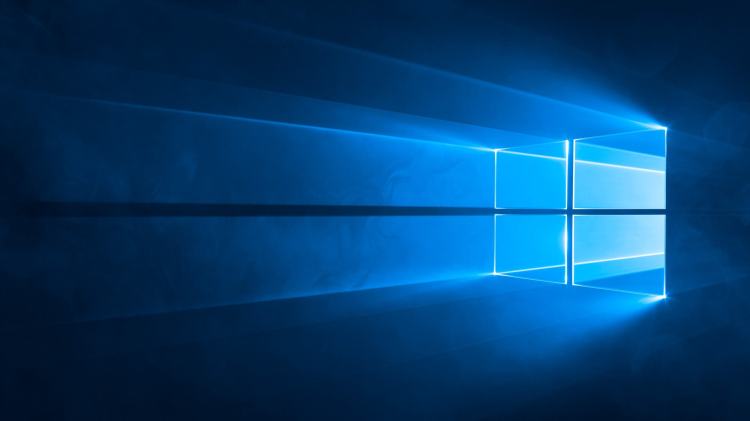Microsoft today released a new Windows 10 preview for PCs and phones. This build adds new features to the Mail app and gives the Narrator app some context awareness.
Windows 10 is a service. As we wrote in our deep dive on how Microsoft is still building Windows 10, this means Windows Insiders are getting new builds even though the operating system launched in July 2015. The most recent significant update is the Windows 10 Anniversary Update, released in August 2016.
The Mail app has gained three new features. Email messages can be opened in a new window (just like Outlook), Quick Actions can be used directly from new email notifications, and mentions are now available by simply typing the @ symbol anywhere in the body.
For Narrator, when you navigate around, you can now be notified about different groups or other areas you move to. There are also some key combinations related to this: to configure the amount of context you hear (ALT + Caps Lock + /), to change whether the context is read before the item with focus or after (CTRL + Caps Lock + /), and to check the context at any point (Caps Lock + D twice).
The desktop build includes the following improvements and bug fixes:
- Now you can draw along the protractor and have the degree visual remain visible until you start drawing again. We’ve also updated the degree visual to be more clear — black text on a white background, as opposed to the previous black text on a red background.
- Fixed the issue causing you to be unable to sign into apps such as Feedback Hub, Groove, MSN News, etc. with your Microsoft Account if you sign out or get signed out of these apps.
- Precision touchpad fixes: Mis-classifying presses when mousing with one finger and pressing with another, “Reset touchpad” was appearing on PCs that don’t support precision touchpad (legacy touchpad), the 4-Finger gesture graphic would be viewable in Settings on PCs that support only 3-contact, horizontal scrolling was broken in Paint.NET.
- Narrator fixes: New key command (Caps Lock + /) to read the active window title of the current application, improved recognition of edit boxes on the web in Scan Mode, and continuous reading is interrupted appropriately if focus changes or you issue a command.
- Updated the Trusted Platform Module Management control panel (TPM.msc) to provide additional detail when the TPM is “Not ready for use” or “Ready for use, with reduced functionality”.
- Fixed an issue resulting in Task Manager always opening with the default view, despite having configured it on the previous launch (for example, to “Show more details”).
- Fixed an issue where attempting to partition a USB drive via DiskPart would fail with the error “The system cannot find the file specified”.
- Fixed an issue where certain USB drives were failing to mount automatically or via Device Manager, despite being mountable using Disk Management.
- Fixed an issue where Accessibility settings were failing to roam down-level to some PCs running the Windows 10 Anniversary Update — triggering a sync loop and possibly causing some performance issues on those down-level PCs. If you have encountered this issue, to get out of this state – you will need to change a setting under Settings > Ease of Access so that fix will roam down-level. Whichever setting you changed to trigger roaming can be changed back if needed.
- Fixed an issue where Settings would crash when copying hardware properties from the Wi-Fi settings page.
- Fixed an issue where files were no longer automatically selected after being pasted into a folder in File Explorer.
- Fixed an issue resulting in not being able to enter input into the Time or Place fields when creating a Reminder in Cortana.
- Updated the advanced tab of the device properties window in the Sounds control panel to now allow you to select the following sample dates as the default format for devices that support it: 24 and 32 bit at 176400Hz, and 16, 24 and 32 bit at 352800 Hz.
- USB Audio 2.0 devices are now named based on the make/model of the device, rather than using a generic name, in places across the system, for example Device Manager.
- Fixed an issue in Microsoft Edge that prevented dragging content out of the browser to other windows
- Fixed an issue that caused Microsoft Edge to crash when using the Share button to share web pages and PDFs to Mail.
Today’s update bumps the Windows 10 build number for PCs from 14951 (made available to testers on October 19) to build 14955.
This build has two known issues:
- If you have a 3rd party antivirus product installed on your PC — your PC might not be able to complete the update to this build and roll-back to the previous build.
- Insiders may experience the Windows Ink Workspace crashing when using the protractor — we’re investigating.
If you’re OK with the above and want to get build 14955 now, head to PC Settings, select “Update and recovery,” then “Preview builds,” and then click the “Check Now” button.
The corresponding Windows 10 Mobile build also includes new features and improvements, but Microsoft has yet to announce new devices for the platform. And as expected, phone revenue continues to decline for the company.
VentureBeat's mission is to be a digital town square for technical decision-makers to gain knowledge about transformative enterprise technology and transact. Learn More

